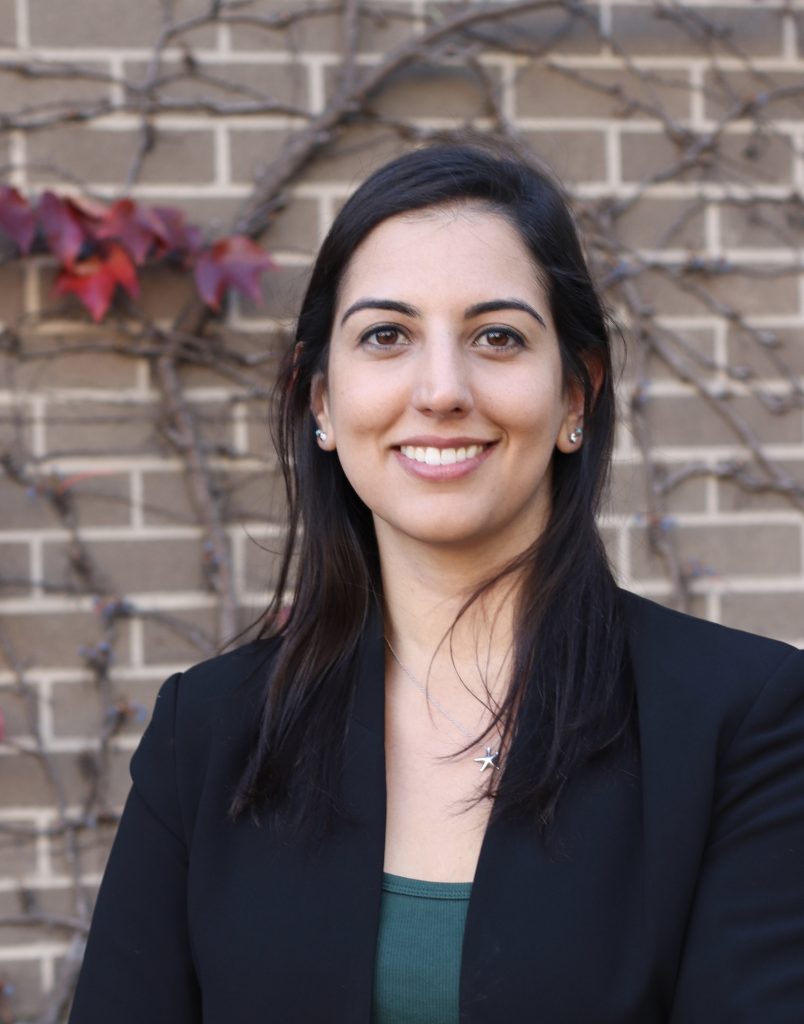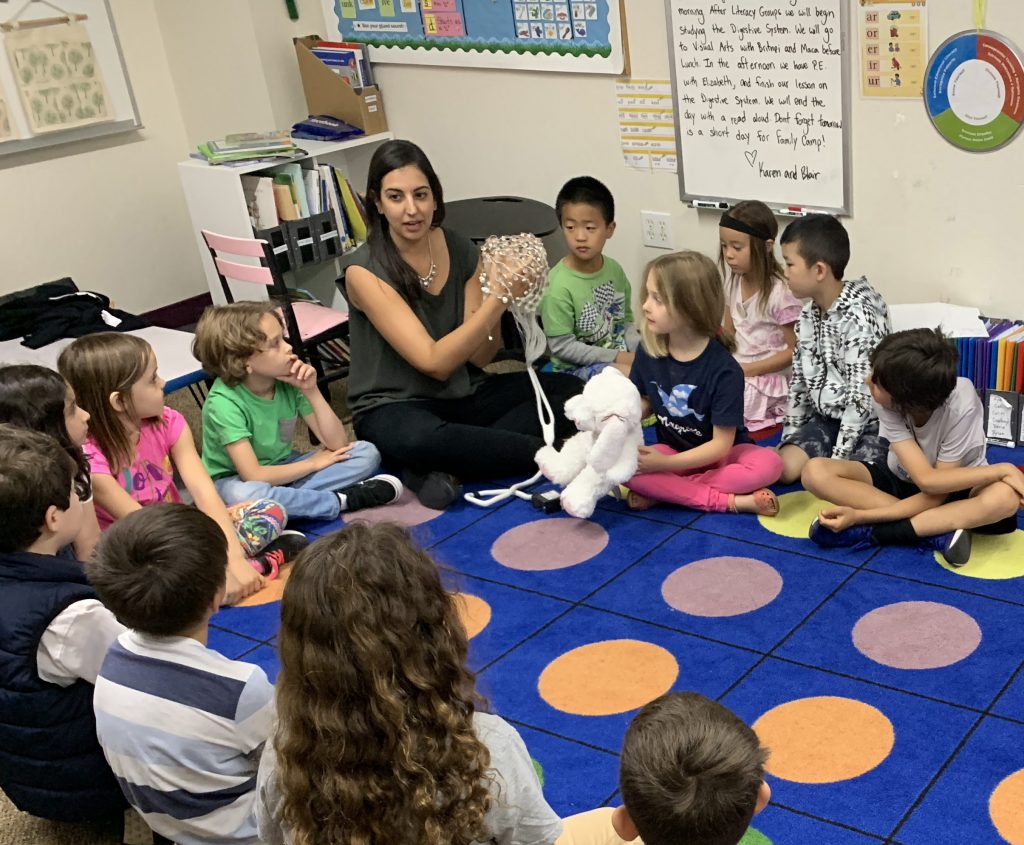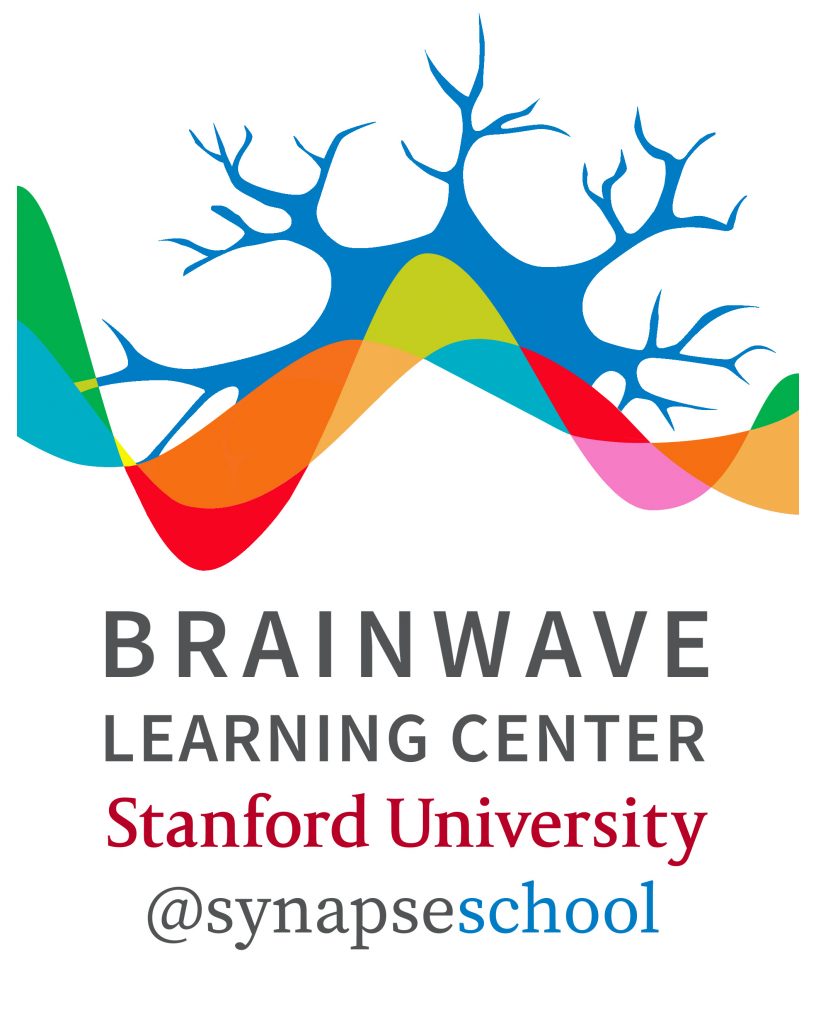 Can you describe the Brainwave Learning center and your role?
Can you describe the Brainwave Learning center and your role?
The Brainwave Learning Center (BLC) is a unique partnership between researchers at Stanford University and Synapse School, an independent K-8 school in nearby Menlo Park, CA. The BLC comprises multiple synergistic initiatives, including: curriculum support for teachers, unique neuroscience learning opportunities, and leading-edge scientific research on the developing mind and brain, which is conducted in our on-site EEG lab. The hope is that by building deep relationships between cognitive neuroscience researchers and members of the school, we can more effectively explore how brain activity is transformed through learning experiences, and how those insights can, in turn, enrich how we experience education.
As the Director of the BLC, I’m leveraging my background in cognitive neuroscience, educational psychology, and science outreach to act as a liaison between these two communities. I’m part of an interdisciplinary team of researchers at Stanford, led by Dr. Bruce McCandliss, which is designing novel ways to use neuroscience to better understand the cognitive processes underlying skills such as reading or early numeracy. I’m also a staff member at Synapse (aptly named!), so I actually spend most of my time at the school. We’ve set up a fully functional, on-site EEG lab — the Brainwave Recording Studio — where students not only participate in research studies, but also learn about how and why we’re conducting EEG research.
What’s the benefit of having a neuroscience researcher in a school?
As a school staff member, I’m fully embedded in the daily lives of the teachers and students at Synapse. In addition to conducting research, I teach science elective courses, do classroom visits to talk about neuroscience and being a neuroscientist, attend and participate in staff meetings, and even supervise students at recess! All of these activities familiarize me with the culture of the school and allow me to develop authentic relationships with both the teachers and the students.
 This approach also means that students are much more comfortable and engaged when they participate in our EEG studies because they are already familiar with our tools, our space, and most importantly, with me and the rest of our team. Another key advantage to being on-site is that students can participate in a 45 minute experiment during the course of the school day and go right back to class or recess. This sets us up really nicely for rich longitudinal studies of brain development, and also makes participation much more accessible.
This approach also means that students are much more comfortable and engaged when they participate in our EEG studies because they are already familiar with our tools, our space, and most importantly, with me and the rest of our team. Another key advantage to being on-site is that students can participate in a 45 minute experiment during the course of the school day and go right back to class or recess. This sets us up really nicely for rich longitudinal studies of brain development, and also makes participation much more accessible.
As a researcher now working primarily in a school, what have you learned about teachers?
One thing I’ve learned about teachers is that they have so many research ideas! Because they work closely with their students every day, witnessing the daily challenges and successes, they have an incredible wealth of insight into cognitive phenomena and patterns that emerge over time. For example, our music director shared that over the years she’s noticed a connection between inability to match pitch and certain learning difficulties, such as with early reading. This led to a discussion about congenital amusia, the hypothesized link between phonological awareness/auditory deficits and dyslexia, and how we might investigate that connection. In fact, a recent study has shown support such a link (Couvignou, Peretz, & Ramus, 2019)!
I’ve also had rich conversations with teachers about topics like the neural basis of second language acquisition and the cognitive benefits of physical activity. I’ve really enjoyed exploring these topics with active practitioners, and would highly recommend that anyone doing educationally-relevant research develop a relationship with teachers! I wish I had done so sooner in my career. To account for this perspective, our group at Stanford is working closely with teachers at Synapse as we develop our research questions and protocols for the coming school year. One way we’re doing this is by organizing a listening and brainstorming session with teachers during summer inservice days.
What are some examples of activities/programs/initiatives you’ve started in this role?
We’ve accomplished quite a bit since the Brainwave Learning Center was established less than six months ago. We have a BLC classroom, where students explore commercially-available brainwave-sensing tools (e.g. Backyard Brains), make neuroscience crafts, experience sensory illusions, and curriculum specific lessons. For instance, first and second grade students learned about the concept of reaction time by seeing how fast they could catch a falling ruler, in conjunction with their science unit on the human body. I’ve also conducted small seminars with middle school students on the brain basis of sleep, adolescent brain developments/risk taking, and cognitive control. Middle schoolers also had the opportunity to hold real human and animal brains and devised their own EEG experiments in my science elective class. Five middle school students acted as research assistants for the BLC by reviewing scholarly research articles (including reviewing an article for Frontiers for Young Minds) and consulting on our study design.
Is this a unique approach or are there other similar institutions around the world doing this kind of thing? If so, where are they and do you / how do you connect with them?
While no one has taken this kind of multifaceted approach to educational neuroscience, there are several groups that are doing school-based EEG research, such as Nienke van Attevelt at Vrije Universiteit Amsterdam, Jennie Grammer at UCLA, and Suzanne Dikker/David Poeppel at NYU. The NYU team, including Wendy Suzuki and Ido Davidesco, has a high school program called Brainwaves, which combines teacher professional development with neuroscience outreach and curriculum. We worked with Jennie Grammer when we were just starting the BLC to learn more about her lab’s work in schools, including best practices for communicating with parents about the research and unique challenges of actually collecting EEG data in schools. In terms of the teacher experience, the Center for Transformative Teaching and Learning is based in a school and has been incorporating MBE and learning sciences research into professional development. Notably, however, there hasn’t really been an attempt to combine in-school research with a fully-embedded neuroscientist facilitating teacher PD and fostering general student engagement and curiosity around neuroscience. To my knowledge, we are the first group to attempt this much more integrative approach, and I think the field is really moving towards this kind of model.
What’s been the response from families? Teachers? Students?
The response has been overwhelmingly positive! We have been really heartened by how supportive and encouraging both parents and teachers have been about this initiative. I had no idea how teachers were going to feel about working together, but the Synapse teachers have been such a pleasure to work with. They’ve actively brought me into the conversation when they are planning curriculum and have been very supportive of things like occasional pullouts for research sessions.
I’ve also been getting positive feedback from parents. One parent sought me out at a school event to tell me that all week her young son had been talking about activities and lessons he’d learned in the BLC. He had recently been diagnosed with dyslexia, so learning about individual differences in brain and behavior in a school context helped to support the kinds of conversations that were happening at home.
At the end of the year, when I asked students for ideas about how to grow the BLC in the coming school year, many students asked for more opportunities to get involved in research, wear the EEG net, and learn more about brains- I take that as a very good sign!
You can keep up with Liz and her work by following her on Twitter

